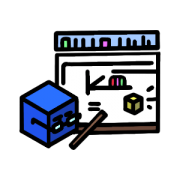<!DOCTYPE html>


Home

Team

Project

Results

Judging

Part

HP

Lab
Home
Results
Judging
We decided to use nitrilase - a protein that degrades nitriles - for degradation of PAN.
According to the literature, we selected nitrilase with high enzymatic activity and relatively complete sequences - AdNIT(BBa_K3599003).
1. Organism of AdNIT(BBa_K3599003)
AdNIT is derived from Nectria haematococca,The fungus Nectria haematococca Mating Population VI (MPVI), also commonly referred to by its asexual name Fusarium solani is a member of an evolutionary group called the Fusarium solani species complex, which is comprised of about 50 species. They can degrade a variety of recalcitrant compounds such as lignin and lignocellulose, hydrocarbons (e.g., pyrene, fluoroacetate), plastics, pesticides (e.g., DDT, butachlor, ioxynil), and cyanide complexes. Indeed, N. haematococca MPVI is tolerant to many compounds shown to be toxic to other fungi, including antibiotics, heavy metals and metabolic poisons. [1]
2. Design of AdNIT:
AdNIT is construct on pET28-b plasmid and bind with upstream LacI sequence. We transformed pET28b_AdNIT vector into E .coli BL21 for expression.

3. Nitrilase Enzyme Activity
The activity of nitrilase was verified by detecting the ammonium ions produced by the degradation of PAN by the bacterial liquid. We define U as the amount of PAN that can be degraded per microliter per hour.


As can be seen from Fig. 2, the U value of pTac_AdNIT is 0.6205, which is 1.3 times that of the negative control.These data indicate that our engineered bacteria have high activity of nitrilase.
